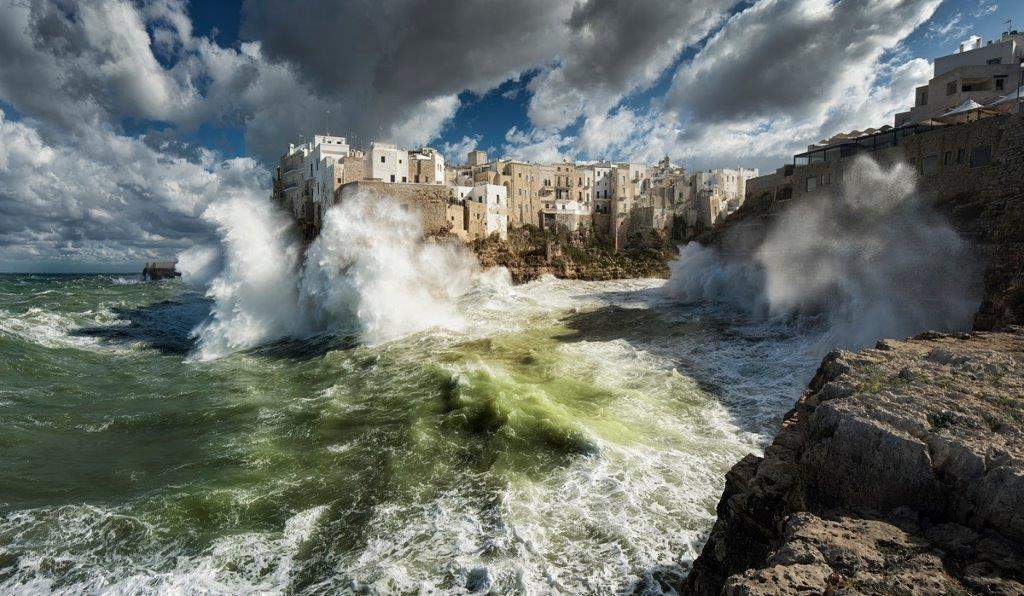Here are the winning photos of Wiki Loves Monuments Italy: they are all from Puglia
The 2020 edition of Wiki Loves Monuments Italia, the photo contest that captures the beauty of Italy’s artistic and scenic heritage and awards 10 shots each year for all to admire on Wikipedia pages and reuse freely, has ended. The winners were honored Thursday at a special online edition ceremony (due to the health emergency) organized by the contest’s promoter, the association Wikimedia Italia, which is dedicated to the dissemination of free knowledge.
The 2020 edition was attended by 15,000 photographs submitted by more than 700 photographers: the invitation to all, professionals and amateurs alike, was to immortalize their own monument of the heart. The contest (held in 50 countries, each with its own edition) saw such participation in Italy that it ranked third on a global scale, after the US and Iran. In addition, more than 300 requests for permission to add new monuments to the photographable list were received: with an increase of more than 1,500, there are now 15,312 Italian monuments that can be reproduced in shareable photographs under a Creative Commons BY-SA license for use. In Italy, in fact, it is possible to photograph and share a monument only if it is included in the list of authorized monuments (authorization that comes from the territorial bodies that have in charge the cultural heritage, according to the regulations of the “Code of Cultural Heritage and Landscape,” the so-called Urbani Code dated 2004 with the subsequent Art Bonus of 2014).
Of the 10 winning photographs in this edition of the contest, the podium is all Apulian: the national jury, composed of professional photographers and expert volunteers from the Wikimedia Italia community, crowned first place Mareggiata Polignano, a shot by Nicola Abbrescia depicting Cala Paura in Polignano a Mare during a sea storm. In second place was Gabriele Costetti with Brindisi - Teatro Verdi, an exterior view of the municipal theater in the Apulian city; third place went to Alberto Busini who with Tutto rosa shows the flamingo oasis in Lesina, in the province of Foggia.
If Puglia takes the first three places in the ranking, it is Tuscany that takes the top spot for photos received, more than 4,000, followed by Lombardy, from which about 2,500 shots arrived, and then Basilicata and Emilia-Romagna, immortalized in about 2,000 photos each. In contrast, 2,300 shots captured panoramic views, a new category for the 2020 edition. The next step for the 10 winning photos is scheduled for January, when the international jury of Wiki Loves Monuments will elect the world’s best shot, chosen from the best collected in all the countries participating in the competition.
Matteo Ruffoni, president of Wikimedia Italia: “Thanks to Wiki Loves Monuments,” comments Matteo Ruffoni, president of Wikimedia Italia, “we have been able, even in such a complex year, to continue the work of enhancing the value of our artistic heritage, increasing the number of monuments released and photographed. Everyone has the right to be able to admire and appreciate the beauty of Italy and the world, especially in this 2020 that has confronted us with the impossibility of travel and the opportunity to admire art for free through a simple click.”
To see the 10 winning photos of Wiki Loves Monuments Italy 2020, one must log on to the appropriate gallery on Wikipedia’s website.
These are the motivations that led the jury to select the top 3:
Mareggiata Polignano by Nicola Abbrescia: “Image that enhances the exuberance of the explosive nature in contrast to the small motionless but indomitable village clinging to the cliffs and shows how much the human work is immersed in the natural context, resulting almost swallowed by it. The shot demonstrates a remarkable skill of the photographer in capturing the exact moment of the maximum elevation of the undertow.”
Brindisi - Teatro Verdi - detail of the facade by Gabriele Costetti: “Clean, geometric black-and-white photo that elegantly emphasizes the contrast between the modern, vertical architectural structure of the theater and the ruins in front of it. This contrast is also recalled in the two figures, young and old, sitting on the bench in the foreground.”
All Pink by Alberto Busini: “Image with an enchanted and enchanting atmosphere, transporting us to a fairy-tale and timeless world but subtly challenged by the presence, in the distance, of modern Technology in the form of wind turbines blurred in the fog.”
 |
| Polignano tidal storm |
 |
| Polignano storm tide |
 |
| Polignano tidal storm |
 |
| Here are the winning photos of Wiki Loves Monuments Italy: they are all from Puglia |
Warning: the translation into English of the original Italian article was created using automatic tools. We undertake to review all articles, but we do not guarantee the total absence of inaccuracies in the translation due to the program. You can find the original by clicking on the ITA button. If you find any mistake,please contact us.



























